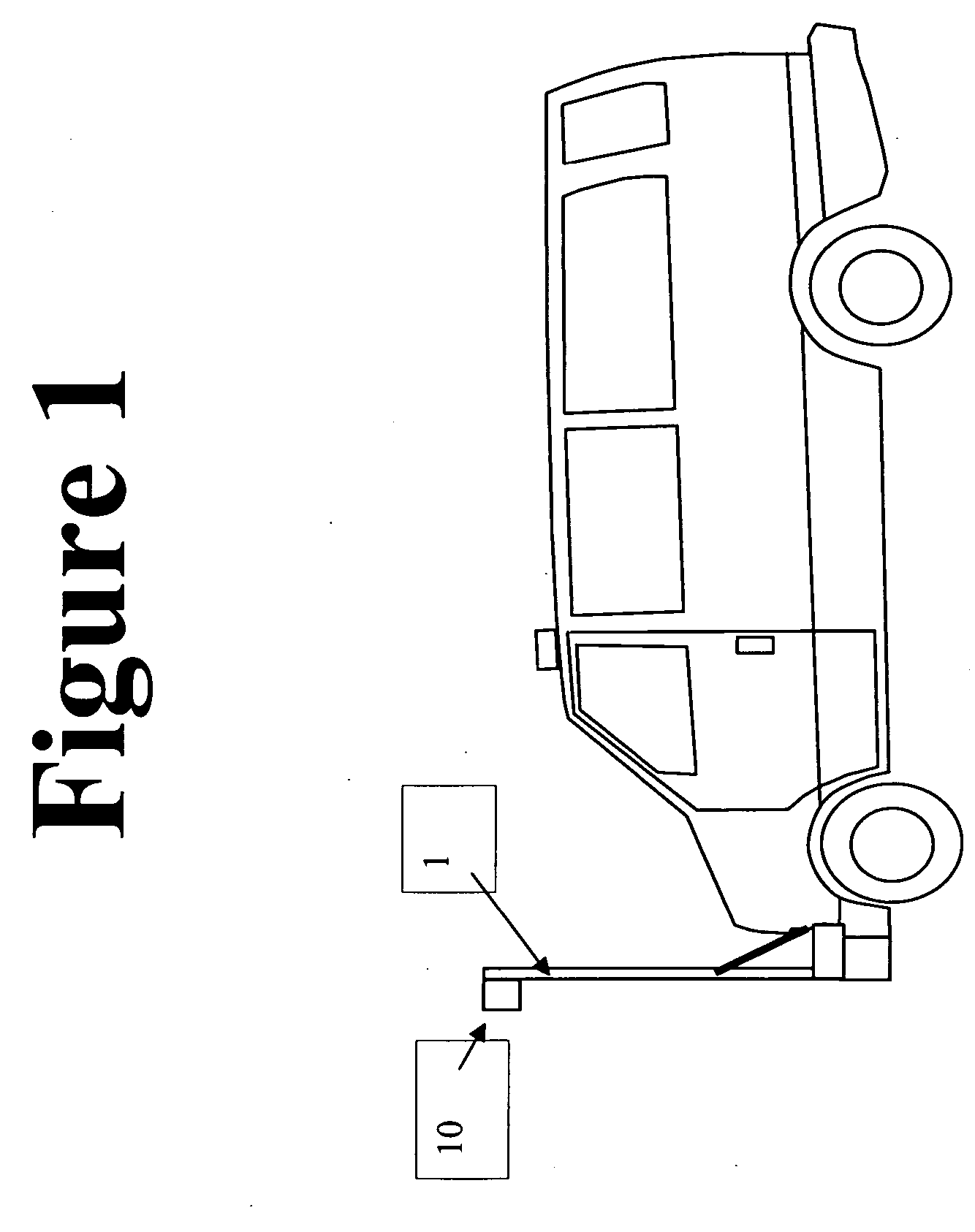Surfaces, e.g., such as pavement, roads, walkways, carriageways, parking lots, sidewalks and foundations, and the like are subject to heavy wear from traffic and / or environmental conditions.
Over time, cracks cause the degradation of the pavement conditions and of the underlying surface.
The increase in traffic on the nation's highways and the
increasing weight of both commercial and individual vehicles has lead to an accelerated deterioration of the nation's road and highway infrastructure.
These surfaces are particularly susceptible to environmental conditions.
Water under the pavement leads to
erosion and eventually to failure of the pavement.
Another related problem is the formation of
frost heaves.
In colder regions, the water under the pavement expands as it freezes and expands in the pavement creating a bump or “
frost heave” that causes pavement failure.
Another pavement defect is rutting, which is the result of
surface deformation in the wheel path of the vehicle.
One method of evaluating the condition of the pavement is
visual inspection of the pavement surface by skilled personnel, which is extremely labor intensive and suffer from the influence of human subjectivity.
Therefore, the information obtained from the
visual inspection of the pavement may not contain the detail necessary to accurately determine the condition of the pavement.
Human evaluation of the conditions of the surface also leads to reproducibility problems for information on pavement
cracking for common types of
payment surfaces.
Furthermore, for the
visual inspection method is rate limited by the individual (e.g., time, speed, eyesight, environmental conditions and the like) and the very nature of this inspection exposes the individual to numerous traffic and safety hazards.
Thus, it is virtually impossible for visual inspections of all sections of the roads in a particular municipality and / or region to gather, store, catalog and update the necessary crack data.
However, the current video systems are not without limitations.
For example, these systems are prone to overlap and may also lack the definition necessary to evaluate the pavement surface for the initial stages of defect formation.
Another problem associated with the detection of cracks in the surface is definition of the sensor when the image of the surface is large in comparison to the defect area, as the dimension of the defects may become of the order of a pixel or even smaller than a pixel.
Therefore, the detection defects will become very difficult or highly random, particularly due to the analog-
digital conversion that is necessary to process the image.
However, these systems do not provide sufficient data relating to cracks.
Many automated systems have limitations in their ability to discern cracks at the initial stages, in particular, they lack the ability to discern cracks on pavement surfaces from other structures and / or discern cracks from sealed areas on pavement surfaces.
Furthermore, many systems are not functional at highway speeds, which is necessary for safety and efficient monitoring.
Another limitation of the present automated measurement systems is the reliance on post
processing of the data, which often is preformed manually and is susceptible to
human error, reproducibility issues and is extremely labor intensive.
The foregoing problems have been recognized for many years and while numerous solutions have been proposed, none of them adequately address all of the problems in a single device, e.g.,
early detection of relatively small cracks in the early stage of formation, while reducing overlap and reliance on
human judgment and improving resolution while allowing monitoring at highway speeds.
 Login to View More
Login to View More  Login to View More
Login to View More 


